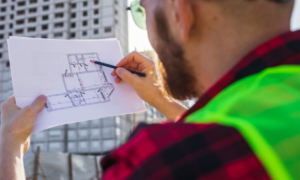Game design is a fascinating and dynamic field, attracting many creative minds. The life of a professional game designer is as vibrant as the games they create. It involves a blend of creativity, technical skills, and teamwork. This article delves into the daily routine of a professional game designer, highlighting the key aspects of their job.
Morning Routine: Setting the Stage
Waking Up to Creativity
A game designer’s day usually starts early. The morning hours are often the most productive. It’s the perfect time to brainstorm new ideas. Many designers find inspiration during their morning routine, whether it’s a quick jog, a shower, or a cup of coffee. This quiet time helps them clear their minds and prepare for a day of creative challenges.
Planning the Day
After breakfast, the next step is planning. Game designers often have a list of tasks for the day. This list includes meetings, design sessions, and deadlines. Planning helps them stay organized and focused. It ensures that they allocate enough time for each task.
Mid-Morning: Diving into Design
Concept Development
By mid-morning, the real work begins. The first task is often concept development. This phase involves brainstorming new game ideas. Designers consider various elements like storyline, characters, and gameplay mechanics. They sketch out their ideas, creating rough drafts and notes. This process is crucial as it forms the foundation of the game.
Collaboration with the Team
Game design is a collaborative effort. Designers often work closely with artists, programmers, and writers. Mid-morning is a common time for team meetings. These meetings are essential for sharing ideas and feedback. They ensure that everyone is on the same page. Collaboration helps refine the game concept and address any potential issues early on.
Lunchtime: A Creative Break
Recharging
Lunchtime is a welcome break. It provides an opportunity to recharge and refuel. Many designers use this time to step away from their desks. A change of scenery can be refreshing. Some may take a walk, socialize with colleagues, or engage in a hobby. This break helps them return to work with renewed energy.
Reflecting on Progress
During lunch, designers often reflect on their morning’s work. They think about what they’ve accomplished and what still needs to be done. This reflection is important for maintaining momentum. It helps them stay focused and motivated for the rest of the day.
Afternoon: Bringing Ideas to Life
Detailed Design Work
The afternoon is when designers dive into detailed design work. This phase involves fleshing out the game concept. They create detailed sketches, write scripts, and develop gameplay mechanics. This work requires a high level of concentration and precision. Designers must ensure that all elements fit together seamlessly.
Testing and Feedback
Testing is a critical part of game design. In the afternoon, designers often conduct initial tests of their concepts. They playtest early versions of the game to identify any issues. Feedback from these tests is invaluable. It helps them refine the game and improve the player experience.
Late Afternoon: Wrapping Up
Final Adjustments
As the day draws to a close, designers make final adjustments. They review their work and make necessary tweaks. This process ensures that the game is polished and ready for the next stage of development. Attention to detail is crucial at this stage.
Documentation
Documentation is an essential part of game design. Designers need to document their ideas, designs, and processes. This documentation is used by other team members and for future reference. Late afternoon is a good time for this task. It helps ensure that all information is recorded accurately.
Evening: Unwinding and Inspiration
Relaxation
After a long day, relaxation is important. Many designers unwind by playing games, reading, or spending time with family. This downtime is crucial for maintaining a healthy work-life balance. It helps them recharge and prepare for the next day.
Seeking Inspiration
Even in the evening, the quest for inspiration continues. Many designers find that their best ideas come when they least expect it. Watching movies, exploring nature, or even cooking can spark new ideas. This continuous search for inspiration is what keeps their creativity alive.
The Unique Challenges and Rewards
Meeting Deadlines
One of the biggest challenges in game design is meeting deadlines. Projects often have tight schedules. Designers must balance creativity with efficiency. Time management skills are crucial. Despite the pressure, meeting a deadline brings a sense of accomplishment.
Overcoming Creative Blocks
Creative blocks are another common challenge. There are times when ideas don’t flow as easily. During these periods, designers must find ways to overcome their blocks. This might involve taking a break, seeking feedback, or trying new approaches. Overcoming a creative block is immensely rewarding. It leads to fresh ideas and renewed enthusiasm.
Continuous Learning and Growth
Staying Updated with Trends
The gaming industry is constantly evolving. New technologies and trends emerge regularly. Professional game designers must stay updated with these changes. They attend conferences, participate in workshops, and read industry publications. Continuous learning is key to staying relevant and innovative.
Skill Development
Skill development is an ongoing process. Designers continually work on improving their skills. This might involve learning new software, mastering new techniques, or enhancing their storytelling abilities. Skill development ensures that they can tackle any challenge that comes their way.
Conclusion
Being a professional game designer is more than just a job. It’s a passion. The daily routine is filled with creativity, collaboration, and challenges. Each day brings new opportunities to create something unique. The satisfaction of seeing an idea come to life is unparalleled. For those with a love for games and creativity, it’s a dream profession.
In summary, a day in the life of a professional game designer is dynamic and fulfilling. It involves a blend of planning, creativity, and teamwork. Despite the challenges, the rewards are immense. The journey from concept to finished game is a testament to the passion and dedication of game designers.


































